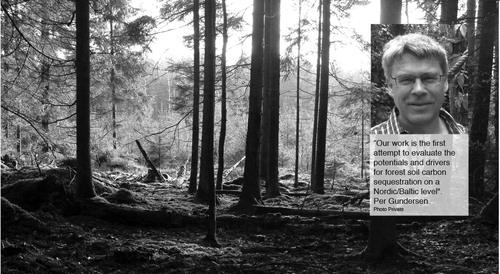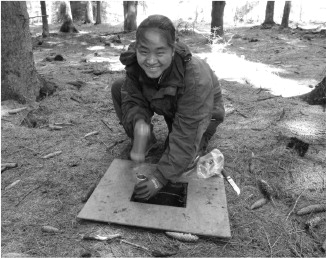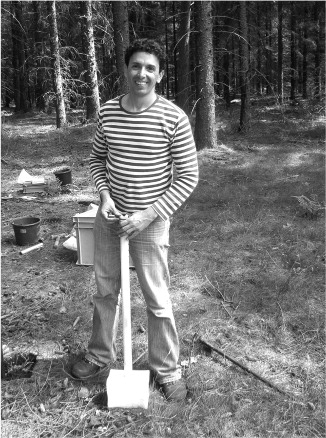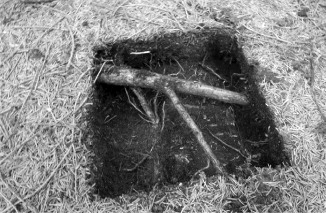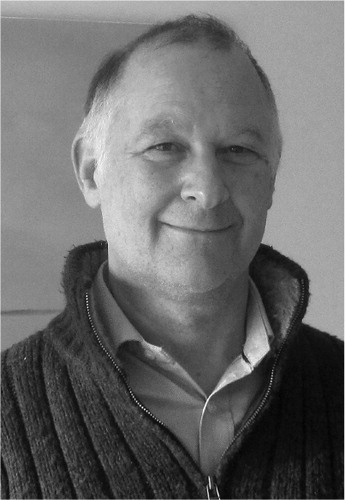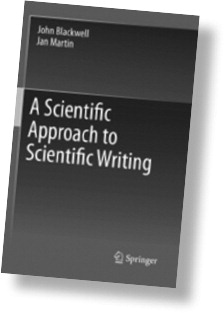Important carbon storage in Nordic forest soils
Forest soils are extremely important as storehouses for carbon, and their function as a sink becomes even more important in the light of climate change. The Nordic–Baltic network “Forest soil carbon sink” (FSC-sink), a spin-off of the SNS-supported network CAR-ES, has collated the most up-to-date knowledge on how soil carbon storage is impacted by tree species, harvesting regimes, nitrogen deposition, soil warming and land use change.
Professor Per Gundersen, coordinator of FSC-sink, underlines the challenges associated with studying belowground carbon cycling.
– The processes in the soil are slow, and identifying a small change in a large stock entails high levels of uncertainty. Therefore, assessing the soil carbon sequestration rate needs an approach where long-term forest monitoring is combined with modelling and other innovative methods, he says.
The network took advantage of the already well-established cooperation between Nordic and Baltic countries in CAR-ES. The countries represent major gradients in climate, nitrogen pollution and forest use intensity, and also hold a lot of data on their forests.
– By working together, we had the potential to resolve some important issues about soil carbon. When I edited the final report, I was astonished how much the network as a whole had accomplished and how well the studies complemented each other, he continues.
The network covered seven main topics, as follows:
Photo: Per Gundersen
1. Important storage in soils
It is well known that the carbon stored in litter and as organic carbon in the mineral soil plays an important role in the carbon cycle of the Nordic forests. The stocks of stored carbon are enormous. An analysis of over 4 000 monitoring plots in Sweden, Denmark and Latvia demonstrated that about 50–200 tonnes are stored per hectare in the soils. This is 2–5 times more than the carbon found in the standing biomass across the Nordic countries. The stock increases with temperature, thus it decreases towards the north and east, but there is no correlation with precipitation.
2. Nitrogen can increase carbon storage
Carbon sequestration in soils is strongly linked to the nitrogen cycle. Nitrogen deposition is generally considered to have a positive effect on soil organic carbon throughout the region. However, experiments undertaken across the network do not really support this effect. The soil organic carbon stocks were unchanged along local N-gradients on forest edges and in a long-term N addition experiment at depositions exceeding 25 kg N/ha/year. At lower N deposition rates, N may however have a positive effect on carbon storage.
3. Warming increases decomposition
Decomposition rates of the soil organic carbon are expected to increase as global temperatures rise. This means that the soils will become a source of atmospheric carbon, thereby amplifying climate warming.
A simulation using the model ForSAFE indicates that soil organic carbon stocks are sensitive to climate change, particularly in the south of the region. The losses from the increased decomposition can, however, be somewhat moderated by increased nitrogen deposition, according to laboratory experiments.
Photo: Per Gundersen
4. Afforestation is positive in the long run
Afforestation and natural succession on crop- and grasslands are two important land-use changes in the Nordic and Baltic countries. Their effects on the soil carbon were investigated through a meta-analysis. It appears that the first period of afforestation leads to losses in carbon, but after about 30 years, the soil of the new forest starts to act as a sink for carbon.
5. Conifers store most
The current literature on tree species’ effects suggests that carbon stocks can be increased by 200–500% in the forest floor and by 40–50% in the top mineral soil by a change in tree species. The most carbon-rich forest floors are found under conifers. Potentially, tree species choice could be used to promote carbon storage, but more knowledge is needed for safe recommendations.
6. Losses from biomass harvest
Increased biomass harvest can lead to a potential loss of soil carbon. However, a literature review showed that some of the losses from the biomass removal can be compensated for by mechanisms such as better establishment, increased growth of the field layer, and reduced decomposition. However, there is much uncertainty and more long-term data are needed.
7. New findings highlight the role of mycorrhizae
A large proportion of the fixed carbon is allocated to tree roots and ectomycorrhizal fungi. New research from members of the network suggests that organic layers in fact grow from below through the continuous addition of fixed carbon from roots and mycelia. These findings were published in the prestigious journal Science. It has also been shown that ectomycorrhizal production varies greatly between forests and years, depending on resource availability.
Facts about FSC-sink and CAR-ES
“Forest soil carbon-sink” (FSCsink) was funded by the programme “Climate change impacts, adaptation and mitigation in Nordic primary industries”, initiated by the Nordic Council of Ministers, and is a spin-off of the SNS-supported network CARES (Centre of Advanced Research on Environmental Services from Nordic forest ecosystems).
The aim of CAR-ES is to investigate the impact of forest management on environmental services such as carbon sequestration, water quality, biodiversity and soil quality. CARES has been running since 2005 and has, over the years, arranged a large number of workshops and conferences, which in turn have initiated joint applications, projects and scientific papers.
During the first period of CAR-ES (2005–2010), about 20 peer reviewed papers were produced per year by the national groups involved in the network.
The coordinator of FSC-sink is Professor Per Gundersen at Department of Geosciences and Natural Resources Management, University of Copenhagen.
Read more: Gundersen, P. (ed.). 2014. Forest soil carbon sink – Nordic network. IGN Report, December 2014.
Homepage of FSC-sink:
http://ign.ku.dk/english/research/forestnature-biomass/biogeochemistry/forestsoil-carbon-sink/
Homepage of CAR-ES:
www.nordicforestresearch.org/car-es/
Coordinator of CAR-ES is Inge Stupak
Photo: Per Gundersen
Scientific writing is telling and selling a story
As a researcher you may not also consider yourself a salesperson, but you need to sell your ideas to funding agencies, your results to an audience of peers – other scientists – and your conclusions or recommendations to diverse consumers, users and policymakers.
When you write a proposal or scientific manuscript the objective is to convince someone that your excellent research must be funded or that your exciting paper must be published. And your sales weapons are your words and graphics.
Someone who knows well the importance of words and structure of text is Dr John Blackwell, who has been writing, re-writing and editing scientific texts for 20 years. News and Views met him to catch some advice.
– We must admit that the vast majority of scientists are better researchers than writers, but still they all have potential to improve their writing skills, he says.
English is the second language for many researchers, but grammar mistakes are only minor concerns, and can be easily corrected. The structure, flow and logic of the text are far more important.
His major advice is to convey the essence as quickly as possible. Why is the focal problem important, what is unique about the research, and why are the results worth attention?
– The first sentences of the abstract, the main text and the cover letter also give the first impression. You have to catch the editor's or readers’ attention immediately by highlighting the importance of the project.
Focus on what's novel
A common mistake is to focus too much on limitations of the study instead of what is novel. John Blackwell has helped researchers to publish in prestigious journals, simply by restructuring the text.
– Some authors of scientific texts seem to have an irresistible urge to minimise chances of publication by highlighting, at length, limitations of their work, he says.
One example is a paper intended for Nature where the authors had repeatedly written that the study confirmed previous observations, without stating that other results had been obtained in settings that were far from natural. Nature only publishes novel findings, so the chances for acceptance were low. John changed the text and highlighted that this was the first study to detect evidence of the focal process in field conditions, and the paper was accepted.
Fill the gaps
The first sentences are of course important but the whole text also needs strong “narrative flow”, i.e. a clear storyline or thread must be maintained from the start to the concluding remarks. The theoretical and practical implications must be clearly described so the reader is not left wondering why the study was done, and the text should keep the reader actively engaged.
A common mistake John Blackwell describes is to leave non sequiturs – a statement that does not follow logically from preceding statements. For instance: “Since over-fertilisation can cause environmental problems, we assessed the possibility that surface waters in the area are eutrophic.” This sentence does not provide a key link: that one of the problems over-fertilisation can cause is eutrophication.
About John Blackwell
John Blackwell received a PhD on algae stress plant physiology from Sheffield University and continued as a postdoc in Aberystwyth (Wales) and Umeå in Sweden, where he worked in SLU's Forestry Faculty.
He started editing papers, proposals and theses for his colleagues in Sweden, and soon realised that this was his calling. He founded Scientific English Editing Services, now Sees-editing, in 1996, and since then he has personally edited more than 5000 papers on behalf of scientists from more than 30 countries.
John Blackwell is also co-author of “A scientific approach to scientific writing”, a book published by Springer.
Photo: Mats Hannerz
– Non sequiturs often arise simply because the missing links seem obvious to authors, and they assume that readers will have the knowledge required to fill the gaps. But this is wrong, he says. Some readers may lack the knowledge and thus fail to understand the passage (and potentially the whole purpose of the study), while others may understand it but still be irritated by the break in the logic. Furthermore, if there are several non sequiturs in a passage it may become nearly incomprehensible to all readers.
Get help
It is very easy to omit important linking information. Authors are highly familiar with their studies, read between the lines and forget that the readers do not know all the details of their study. Therefore, it is important to get help and second opinions on papers.
– A common mistake is to let only close colleagues in your group check a manuscript. They too will be highly familiar with the study, and thus potentially ‘blind’ to some flaws. Therefore, a check by someone who has general knowledge of the subject, but is less intimately involved, can be highly valuable.
John Blackwell doesn't say it, since he doesn't want to exploit the interview by advertising his own business, but further good advice is to get help from a professional scientific editor. Getting someone to merely check the grammar is not enough, tightening the structure and phrasing is also often critical. And that needs someone with at least some scientific experience as well as linguistic expertise, who can close gaps in the logic and improve the narrative. The small cost of editing a text may determine if an article will be accepted or a proposal granted.
Photo: Alexandru Giurca
A great step forward for Forest Policy Science in Northern Europe
The SNS/EFINORD funded network Forest Policy Science held its 2nd Nordic Conference on Forest Policy Science in November 2014. The location was Ängavallen in southern Sweden.
Altogether 37 participants from Nordic and Baltic countries took part in the 3-day conference. The first day was devoted to “Deliberative Governance” and “Ideas, Frames and Discourses”. Days two and three continued with sessions on “Local participation in global politics”, a discussion on “European East, still in transition?” and “Conflicts, coordinations, coalitions” and “Creative futures”.
Daniela Kleinschmit, coordinator of the network, concluded: “When talking about Forest Policy Science there are fragmented initiatives in Northern Europe. We need to cooperate in order to strengthen our network and make a difference on a bigger scale.”
The programme and some of the presentations can be downloaded from the SNS website
Contact News & Views
Write to the scientific editor:
Mats Hannerz,
Silvinformation AB
More info about SNS:
News & Views is a newsletter from SNS containing short, popularized articles covering Nordic forest research and forestry. Articles presenting SNS-supported activities are prioritized. The newsletter is published eight times per year, and is available for download from the SNS and Scandinavian Journal of Forest Research websites.

